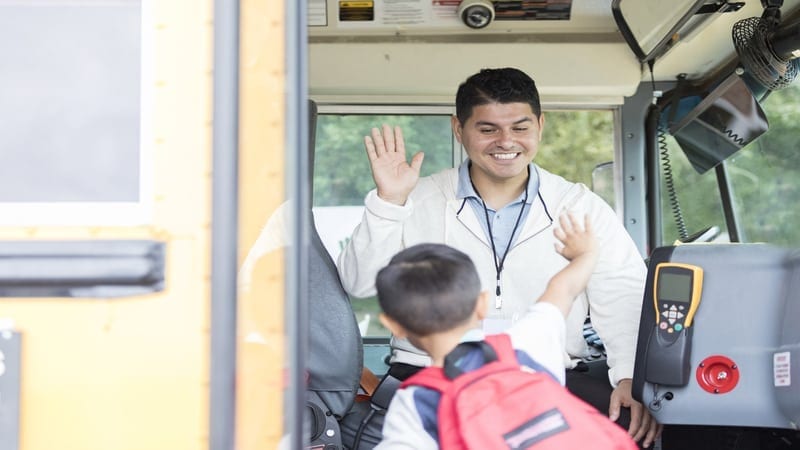Are the kids on your busses sometimes out of control? Are you constantly writing detentions because your drivers report getting hit by flying cookies and swear words? School bus behavior issues go beyond disrespect. They also create a safety hazard for everyone on board. PBIS, or Positive Behavior Intervention Supports, can be used with your bus drivers and students to make the ride to and from school a calmer, safer experience.
Christiana Elementary in Rutherford County, Tennessee, was one of nine schools to receive specialized PBIS training. Here’s what they did to strengthen driver-student relationships and also increase the safety of the ride.
1. Listen to the bus drivers.
The first step was to survey students and staff about their experience on the bus. Based on feedback, the school formed the Bus Behavior Council. A parent advisory committee organized a special breakfast where the school’s bus drivers were invited to share their thoughts on what needed to change to improve student behavior.
In the past, the conversations about student behavior on school buses excluded the bus drivers. The drivers, very understandably, felt like they were cut off from the school. The focus of the council was to give these important staff a voice. Drivers shared with each other strategies on building relationships with their students. They also listened as experts gave advice on improving behavior.
2. Incentivize good school bus behavior.

A new strategy was devised to reward students for positive school bus behavior. Drivers started carrying “bus bucks.” When the driver saw a student meeting an expectation, they rewarded them with the coupon at the end of the ride. The drivers then told the student exactly what they did to earn the buck. For example, “Richie, I saw that you were seated the entire ride with your hands and feet out of the aisle. Great job!” Behavior-specific praise paired with the use of the student’s name is a powerful strategy.
At the end of each week, the bus bucks went into a school-wide drawing for the Bus Rider of the Week. The selected student’s name was posted on monitors around the school, and they received a special reward, like free ice cream from the cafeteria or a homework pass. This incentive system motivates students to exhibit good behavior. And because bus drivers are the face of it, it also helps build their relationships with students.
3. Make sure bus drivers are respected.
It is equally important for the school to build relationships with the bus drivers. Staff and students should recognize their value, which leads drivers to take ownership of their role and excel in it. Every month, the bus drivers’ names were put into a drawing for Bus Driver of the Month. The winning driver was presented with flowers, a gift card, and also a personalized thank-you note. Their picture was also taken and shared on social media. This recognition for their service helped them take pride in the important work they do. As a result, they now connect more with students, and the number of behavior incidents has decreased.
Students need to realize that buses are an extension of the school. The expectations for how they behave on the bus is the same as when they are in the hallway or classroom are. Positive reinforcement is one of the best ways to instill that behavior. In fact, Christiana Elementary School saw a 59 percent decrease in discipline reports on their busses in the first year of the program. When changing bus behavior, giving students positive motivation and affirming bus drivers works. Behavior gets better, and the bus ride gets safer.
Join the great conversations going on about school leadership in our Facebook groups at Principal Life.
Also, check out Rethinking School Lunch.

